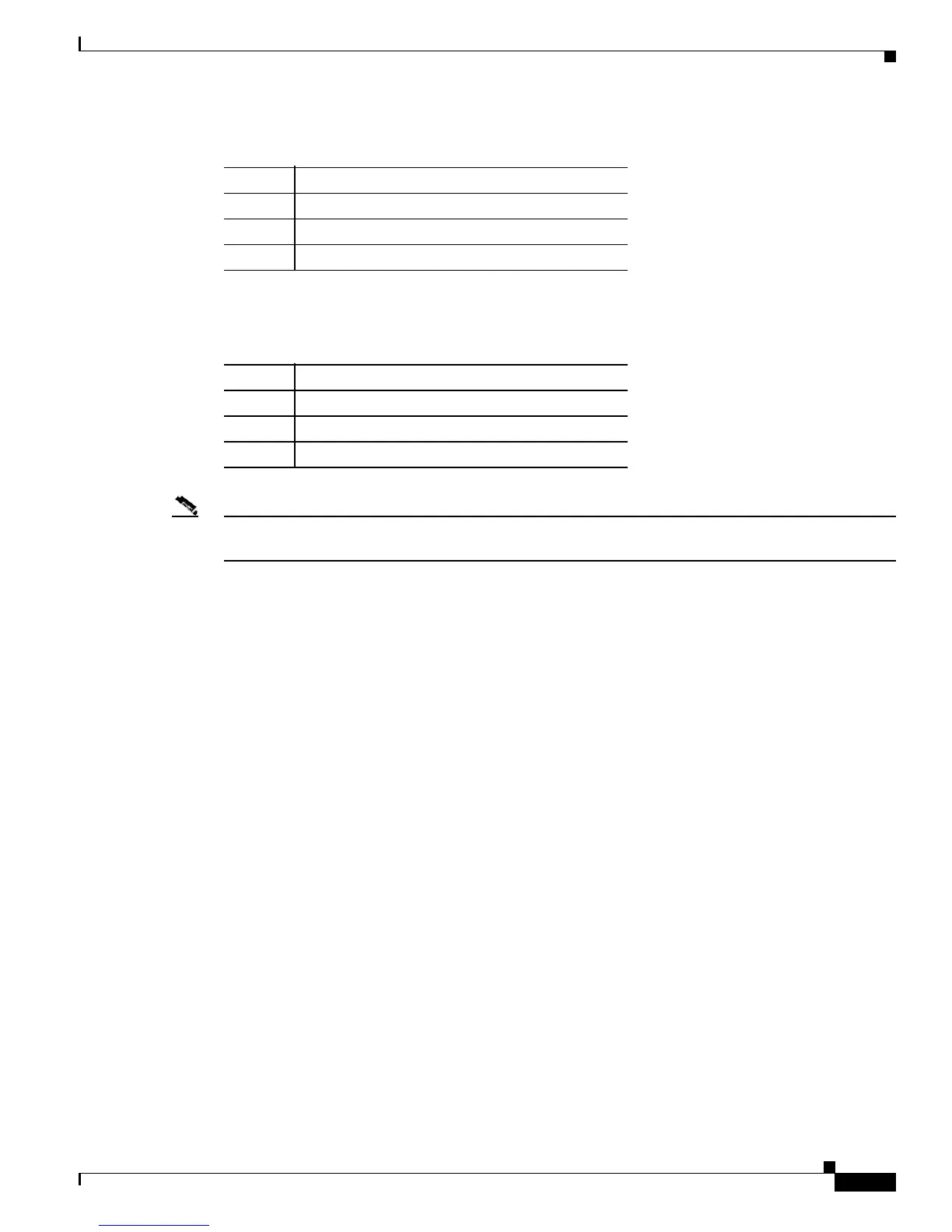2-213
Catalyst4500 Series SwitchCiscoIOS Command Reference—Release 12.2(18)EW
78-16201-01
Chapter2Cisco IOS Commands for the Catalyst 4500 Series Switches
qos aggregate-policer
Bursts can be entered in bytes without a suffix. In addition, the suffixes shown in Table2-11 are allowed.
Note Due to hardware granularity, the rate value is limited, so the burst you configure might not be the value
that is used.
Modifying an existing aggregate rate limit modifies that entry in NVRAM as well as in the switch if it
is currently being used.
When you enter the aggregate policer name, follow these naming conventions:
• Maximum of 31 characters long and may include a-z, A-Z, 0-9, the dash (-), the underscore (_), and
the period (.).
• Must start with an alphabetic character and must be unique across all ACLs of all types.
• Aggregate policer names are case sensitive.
• Cannot be a number.
• Must not be a keyword; keywords to avoid are all, default-action, map, help, and editbuffer.
An aggregate policer can be applied to one or more interfaces. However, if you apply the same policer
to the input direction on one interface and to the output direction on a different interface, then you have
created the equivalent of two different aggregate policers in the switching engine. Each policer has the
same policing parameters, with one policing the ingress traffic on one interface and the other policing
the egress traffic on another interface. If you apply an aggregate policer to multiple interfaces in the
same direction, only one instance of the policer is created in the switching engine.
Similarly, you can apply an aggregate policer to a physical interface or to a VLAN. If you apply the same
aggregate policer to a physical interface and to a VLAN, then you have created the equivalent of two
different aggregate policers in the switching engine. Each policer has the same policing parameters, with
one policing the traffic on the configured physical interface and the other policing the traffic on the
configured VLAN. If you apply an aggregate policer to only ports or only VLANs, then only one
instance of the policer is created in the switching engine.
In effect, if you apply a single aggregate policer to ports and VLANs in different directions, then you
have created the equivalent of four aggregate policers; one for all ports sharing the policer in input
direction, one for all ports sharing the policer in output direction, one for all VLANs sharing the policer
in input direction, and one for all VLANs sharing the policer in output direction.
Table2-10 Rate Suffix
Suffix Description
k 1000 bps
m 1,000,000 bps
g 1,000,000,000 bps
Table2-11 Burst Suffix
Suffix Description
k 1000 bytes
m 1,000,000 bytes
g 1,000,000,000 bytes

